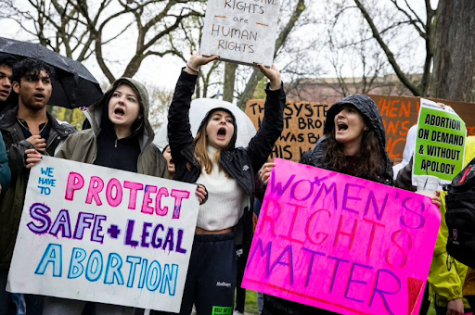Clothes with a consequence
November 21, 2022
A controversial topic for young teens for decades has been that of the dress code. As one of the most crucial parts of society is self-expression, especially regarding clothing, it is no wonder that students have many differing opinions when word that the dress code will be more enforced this school year has been spread.
In a school environment, students are often limited in the amount of freedom they have to express themselves. Dress codes are put in place in order to dictate what is and isn’t appropriate for students to wear in. When an overly strict dress code is put in place, this furthers the lack of a creative outlet for students to showcase who they really are.
It is a constant struggle between students and those in authority throughout the world to find balance between what should and shouldn’t be acceptable in a school environment. Obviously, there are some forms of dress that should be kept for occasions other than school, but many regulations that students are required to abide by tend to be extreme, especially in this day and age.
“I think the really old traditional rules should be reevaluated and changed to be more modern and inclusive,” an anonymous Neshaminy student said.
Students know that many of the current regulations are outdated. As times progress, so should the rules that students have to follow. Many of the guidelines that are written in the dress code policy lack inclusivity, especially regarding diversity in Neshaminy High School.
Gaby Labora, a Neshaminy senior, had similar views.
“The dress code can be super misogynistic in which ‘a lot of skin showing’ for girls is hard to apply to such a wide variety of body types,” Labora stated.
There is a very evident difference in how girls get treated within the school system compared to boys. Many girls are told to cover up and have to constantly be aware of their appearance in order to fit the rules that the school has created for them, while boys are more often only told to take off their hats and hoods.
“I hate that a lot of older people equate how one dresses to how they are as a person. It’s such a linear way of thinking,” Labora also stated.
She also expressed how although she has never been ‘dress coded’, she has had negative experiences involving staff members judging her appearance.
People create warped perceptions of those around them only based on the clothes they wear. Even pieces of clothing that aren’t necessarily “inappropriate” can be targeted when they express an individual’s style.
When the COVID-19 pandemic swarmed the nation, most school rules became very relaxed, as did the dress code at NHS. Many students were able to get away with more than they had in previous years, and administrators are taking this change into account.
NHS has not made it explicit as to how students will be penalized for violating the dress code and tend to give out warnings versus write-ups very inconsistently, if at all.
“Please discourage outfits that are too skimpy…” Principal Stephen Garstka stated in an email sent out to parents in late September.
The phrasing used in this email is directed toward girls, specifically with the word choice of “skimpy” meaning “short and revealing”. While there are outfits boys can wear that can be inappropriate for school, they are normally not sexualized or seen as “revealing”.
There have been progressions with the dress code throughout Neshaminy’s history as fashion has evolved and is no longer limited by gender stereotypes. This is evident by how relaxed administration has been this year with enforcing the dress code. However, many changes and improvements still need to be made.
“A change to the dress code would show that students’ voices were being heard,” the anonymous student said. “All that students want is to know that their opinions are being valued.”












